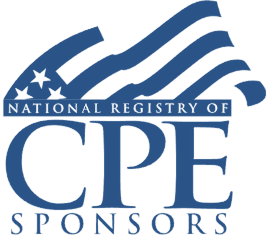Welcome! Save 30% on all CLE, CPE, and Professional Skills webinars, plus 15% off any annual pass with code HOLIDAY25
About the Course
Introduction
This webinar will detail the most frequent and recent additions and subtractions imposed by states when calculating taxable business income. Our panel of state and local tax experts will give examples of these required adjustments in specific states so that SALT advisers are aware of these when calculating and preparing multistate tax returns.
Description
States vary in their acceptance of federal provisions of the IRC. Some use rolling conformity and mirror federal guidelines to limit compliance issues and costs. Others use a fixed date approach and comply with new federal rules as of a specific date. All states adopt their own unique rules, and none conform fully with federal legislation. Most states do, however, use federal taxable income as a starting point and incorporate addbacks and subtractions to arrive at state taxable income.
Decoupling is the practice of adopting the overall federal provisions with the exception of certain items that are eliminated. 168(k) bonus depreciation has been a historically popular addition for states to decouple. The plethora of recent tax acts has left SALT professionals with even more addbacks and subtractions to consider on state returns. States have only recently decided to what degree they will allow recent tax additions and changes, including the 199A deduction, accelerated depreciation, net operating loss deductions, and interest expense deductions under 163(j).
Listen as our authoritative SALT panel discusses the most common addbacks and subtractions states require to calculate state taxable income and best practices for handling and tracking these adjustments.
Presented By


Mr. Smith is national technical leader of BDO’s State & Local Tax (SALT) practice. He sets BDO's policies and positions on technical SALT issues, as well as thought leadership, brand visibility, training and risk management. Mr. Smith's SALT practice is the result of over 25 years of experience and is national in scope and focused on multistate tax consulting, representing clients in multistate SALT controversies, and advising clients with respect to their multistate tax planning. The main concentration of Mr. Smith's SALT practice is on corporate income and franchise taxes, but he has also advised and represented clients with respect to their sales and transactions tax needs as well. A significant amount of his representation focuses on helping clients on the state tax consequences of mergers and acquisitions, intra-group reorganizations, special purpose entities, and business planning.
-
BARBRI is a NASBA CPE sponsor and this 110-minute webinar is accredited for 2.0 CPE credits.
Date + Time
- event
Monday, January 13, 2025
- schedule
1:00 p.m. ET./10:00 a.m. PT
- Overview of the state of IRC conformity
- How state income tax is calculated
- Why states require such addbacks and subtractions
- Most common addbacks and subtractions
- Detail of addback and subtractions for various states
- Separate or combined filings
- Audit issues
The panel will cover these and other key issues:
- Tracking depreciation differences in multiple states
- Handling state adjustments for Section 163(j) interest expense deductions
- What are the most common state additions and subtractions that SALT practitioners should be aware of?
- What methods do states use for calculating state taxable income?
Learning Objectives
After completing this course, you will be able to:
- Determine common methods used by states to calculate taxable income
- Identify specific states that use rolling conformity
- Decide how best to track varying depreciation deductions in multiple states
- Ascertain specific additions and subtractions required in certain states
- Field of Study: Taxes
- Level of Knowledge: Intermediate
- Advance Preparation: None
- Teaching Method: Seminar/Lecture
- Delivery Method: Group-Internet (via computer)
- Attendance Monitoring Method: Attendance is monitored electronically via a participant's PIN and through a series of attendance verification prompts displayed throughout the program
- Prerequisite: Three years+ business or public firm experience preparing complex tax forms and schedules, supervising other preparers or accountants. Specific knowledge and understanding of SALT taxation, nexus and apportionment as it applies to multi-state businesses.

BARBRI, Inc. is registered with the National Association of State Boards of Accountancy (NASBA) as a sponsor of continuing professional education on the National Registry of CPE Sponsors. State boards of Accountancy have final authority on the acceptance of individual courses for CPE Credits. Complaints regarding registered sponsons may be submitted to NASBA through its website: www.nasbaregistry.org.

BARBRI CE webinars-powered by Barbri-are backed by our 100% unconditional money-back guarantee: If you are not satisfied with any of our products, simply let us know and get a full refund. Contact us at 1-800-926-7926 .
Unlimited access to premium CLE courses:
- Annual access
- Available live and on-demand
- Best for attorneys and legal professionals
Unlimited access to premium CPE courses.:
- Annual access
- Available live and on-demand
- Best for CPAs and tax professionals
Unlimited access to premium CLE, CPE, Professional Skills and Practice-Ready courses.:
- Annual access
- Available live and on-demand
- Best for legal, accounting, and tax professionals
Unlimited access to Professional Skills and Practice-Ready courses:
- Annual access
- Available on-demand
- Best for new attorneys
Related Courses

State Tax Strategies for Athletes and Entertainers: Residency and SALT Deduction Limitations
Tuesday, January 6, 2026
1:00 p.m. ET./10:00 a.m. PT



